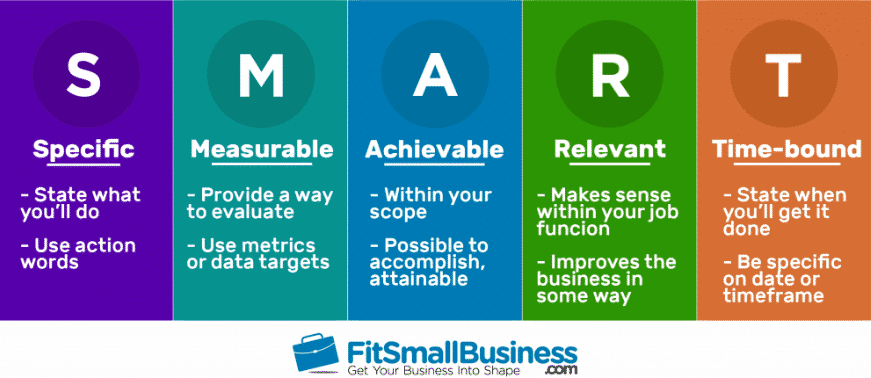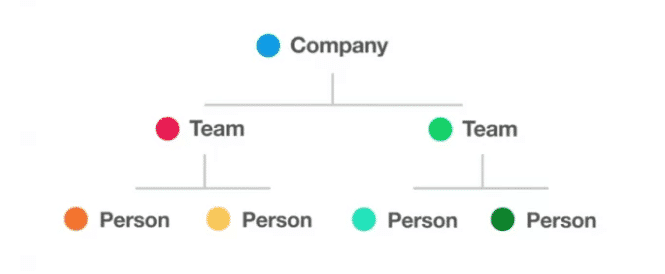This agile goal-setting framework was developed by Intel’s former CEO Andy Grove. During his time at Intel, Grove used MBOs, or Management By Objectives.
However, he saw vast room for improvement. Using the MBO concept as a base starting point, Grove iterated and developed the framework into what we now know as OKR.
John Doerr, author of Measure What Matters, learned OKRs from Grove at Intel after joining in 1974. Doerr went on to work for Kleiner Perkins Caufield & Byers, one of Google's earliest investors, and served as an adviser to the company.
Doer introduced OKR to Larry Page and Sergey Brin, the founders of Google, who later implemented it.
OKRs, when managed properly on OKR software, can help your business achieve more than you ever thought possible. So, let’s take a closer look at how OKRs work, and how you can creatively use them to improve your business!
What is OKR?
What is OKR ? OKR is an acronym that stands for "Objectives and Key Results." Many goal-setting strategies assist in determining the destination but rarely provide a way to track progress, except Objectives and Key Results (OKRs).
Your company's objectives articulate the goal you want to achieve. This is usually ambitious and qualitative.
Ideally, objectives will be brief enough to fit on one line, and memorable enough that employees can recall their Objectives off the top of their head without having to look at a software or their notes.
The second component of the OKR acronym is “key results”. Key results are measurable targets that help you track the organization's progress toward its objectives.
Key results aren’t just tasks that need to be accomplished– instead, they’re outcomes that, when achieved, should undoubtedly mean that the objective has been achieved.
For this reason, your list of key results should follow the “MECE” rule– in other words, your key result list for an objective needs to be mutually exclusive and collectively exhaustive.
When you write a memorable objective and pair it with quantitative key results, your team can accomplish amazing things! Using the OKR framework, companies of all sizes and in all industries have reported unprecedented success. OKRs aren’t just for tech start-ups and industry giants– they’re for everyone!
It can be overwhelming to jump into learning a new methodology, so let’s go back to basics, starting with insight from one of the original practitioners of Objectives and Key Results, John Doerr.
Key Components of OKRs
According to John Doerr, there are five key components of OKRs you must remember: Focus, Alignment, Commitment, Tracking, and Stretch. These five components are also referred to as the “FACTS” acronym. Let’s take a look at what each of these features mean in practice:
Focus:

First up is focus. So many businesses struggle with focusing on only their most important goals. They begin the quarter with the best intentions, but end up getting caught up in the day-to-day chaos that comes with running a business.
OKRs can change this chaos into purposeful, mindful action. Each team, department, or level should have 3–5 OKRs, with a maximum of 5 key results per objective. Due to these limits, organizations and teams are obliged to focus on their most important aims and desires.
When individuals and organizations are focused, their bandwidth is concentrated on the few issues that matter. People and teams can only achieve stretch goals if they focus entirely on a few critical objectives.
Alignment:
OKR alignment clarifies how employees' work contributes to the organization's goals, resulting in the entire company operating in lockstep. Over 85% of corporate employees, according to a study, are unaware of the company's strategy and goals.
OKRs overcome this difficulty by ensuring that corporate goals (OKRs) are cascaded to departments and teams via top-down assignment or bottom-up alignment.
Commitment
Here, “Commitment” refers to a type of goal. Commitments are OKRs that must be met without fail within the timeframe stated.
While some OKRs are meant to be ambitious and should reach for the stars, there are instances where a project, process, or target needs to be met at all costs.
When a team sees that one of their OKRs is highlighted as a “Commitment” they know precisely what to prioritize and where the majority of their resources and attention should be.
Tracking
OKRs should be monitored at least once a week. Each key result's measurements are set at the beginning of the quarter and will be used for monitoring and tracking.
Teams can use transparent tracking tools like Profit.co to keep track of their OKRs.
This tool keeps everyone up to date on progress and allows members to help coworkers who need help with their commitments by pooling resources and knowledge as needed.
Stretching

OKRs should help the team go above and beyond what they thought was "possible" before. As a result, the goals are set high, and meeting 70% of them is considered "good performance."
To encourage stretch goals when setting OKRs, make it clear that stretch goals are entirely separate from compensation discussions and instead compensation decisions are based on efforts.
Why do we need OKR?
Because of their revolutionary potential, excitement, and ideas, entrepreneurs have the power to change the world. They devote a significant amount of time and money to testing new concepts, but only half of the startups succeed.
It happens when they ignore the importance of validating ideas, overengineer the minimum viable product, pivot late, and fail to align their vision. They get easily sidetracked, spending time, effort, and money while burying themselves in work.
That is why businesses require an effective task management system that will help track and manage the tasks they must complete while allowing them to remain focused on metrics.
The benefits of using OKRs include the ability to easily identify your top priorities throughout the entire quarter, so you never lose sight of what’s important. An OKR platform can help you manage your daily tasks in alignment with your quarterly priorities.
A great OKR management system enables the organization to perform all operations connected to task management, performance management, and employee engagement with ease.
It also improves visualization and each team member’s understanding of their goals in relation to the company’s priorities. Profit.co, according to Capterra, is a greatest OKR software available on the market.
How can OKR improve your Business?
If we start listing the benefits of using OKRs, we might not be able to stop.
However, we may identify a few of the advantages and how they help the organization reach its goals. Here are ten ways that OKR helps improve your business:
1. Build shared OKRs:
The first way that OKRs can help improve your business is by enabling you to build shared OKRs. OKR aids in keeping a clear grasp of the company's goals and motivates each team member to work toward a common goal.
In layman's terms, teams construct shared OKRs to facilitate wide and seamless cooperation without overlapping activities. It indicates that each team has separate responsibilities, but they all have the same goal.
Because everyone's concept of success is the same, managers and employees can connect their duties and goals with the company's mission.
2. Set stretch goals:
One of the key pillars of the OKR framework is stretch goals. So, the next way that OKRs can help you improve your business is by automatically encouraging you and your team to set stretch goals.
By inserting a stretch goal in the overall quarterly strategy, OKR encourages organizations to aim for more than they thought was attainable in the first place.
If you can achieve 80% of your stretch goals, it usually means a lot more than achieving 100% of non-aspirational targets.
3. Complete regular check-ins

One of the essential aspects of a successful OKR program is routine check-ins. The third way that OKRs can help you improve your business is by instilling this process in your team.
The progress of goals is regularly tracked by employing a weekly or monthly check-in cycle. If difficulties arise or plans alter unexpectedly, OKR allows teams to immediately adjust and re-calibrate to the new important results that must be achieved first.
OKRs are also commonly set on a quarterly basis, however they may be set more regularly or on a project basis in some situations.
4. Define goals at every level:
OKRs can help you improve your business by enabling you to define goals at each and every level of your organization: company, department, team, and individual.
Employees are more inclined to engage when they believe their work has actual worth and significance, especially if it contributes to the larger company goals.
OKR allows people to set goals at both the individual and team/company level and link them together, so that everyone knows their priorities, and how they contribute to the higher-level goals.
5. Enable full transparency

OKRs can help you improve your business by enabling full transparency throughout your organization.
This means miscommunications due to siloed work is completely eliminated. Transparency requires open communication, which can be difficult to establish if there is no clear mechanism for expressing and tracking company objectives.
However, this can become easier with OKR. With the right OKR software, your team can easily view OKRs at each level of the organization and can identify what everyone is working on.
6. Establish full-company alignment
The sixth way that OKRs can improve your business is with full-company alignment. A core aspect of any OKR implementation is to align the department and team level OKRs with the corporate OKRs.
Alignment can take place from the top down or from the bottom up, giving employees the option to see how their daily work affects the company’s highest priority goals. The best part about OKR is that it enables teams to prioritize activities with the greatest business benefit.
7. Follow the SMART principle:

Next, OKRs can help you improve your business because they instill foolproof goal-setting habits in your team that make it easy to identify your priorities, track progress, and achieve your goals. One such habit is using SMART goals to write your OKRs.
Teams can use the SMART goal principle to create clear, measurable key results. The SMART principle states that the objectives should be specific, measurable, attainable, realistic, and time-bound.
8. Make goals easy to quantify and measure
OKRs can help you improve your business because they make it easy to quantify and measure OKRs.
With OKR, you have the ability to simplify your high-level goals into easily understandable, trackable goals. Even long-term goals set on an annual basis can be broken down into objective statements and quantifiable key results.
This means that your three-to-five year strategy isn’t something intangible and unattainable– instead, it’s broken down into achievable goals for every quarter that bring you closer to your end goal.
9. Hold effective one on one reviews:
OKRs can help improve the way your business communicates internally. While many businesses already have frequent one-on-one reviews, these meetings aren’t always productive.
Managers usually rely on employees to tell them the state of affairs, leaving room for error if an employee overlooks something or is reluctant to share slow progress.
Conversely, employees can feel like they’re not being heard or understood, because managers aren’t in their shows. OKR drastically improves these meetings by quantifying progress objectively so that there isn’t room for interpretation.
This way, both employees and managers can get a clear sense of how certain projects or processes are progressing. Managers can meet with their team members and easily see what a certain employee is working on, what their priorities are, and what their progress status is– all thanks to OKRs.
This streamlines communication and highlights any issues or roadblocks to managers, drastically improving how businesses identify and solve issues.
10. Use the PPP methodology:
Last but not least, OKRs can help improve your business through the PPP methodology. This is perhaps the most effective way that OKRs transform your business. The PPP methodology stands for Progress, Plans, and Problems (PPP).
This review covers your progress (what has been accomplished) over the prior period, your plans (what will be done) for the upcoming period, and your problems (what are the barriers) expected by each employee/team.
When the employee completes this on a routine basis, they’re forced to take some time to reflect on their progress and identify the things that stand between them and success.
Meanwhile, managers get a bird’s eye view of the state of affairs that’s accurate and detailed without taking up too much of their time.
This means that the employees who need support get the help they need, and the employees who are experiencing nothing but smooth sailing get to keep doing what works for them without going to unnecessary progress meetings or having to catch their manager up on what’s happening.

OKRs Example
OKRs can drastically improve the way your company conducts business. Now, all that’s left to do is write your own OKRs! We already covered the two components of OKRs: Objectives, and Key Results. Let’s quickly look at an OKR example to understand what an OKR would look like in your business.
For example, let’s say you want to set an objective to grow your company’s revenue. This is a great goal, and can act as your objective: Improve Annual Revenue.
Now, we need between three and five key results to help track the progress and success of this objective. These key results should be specific, measurable, achievable, realistic, and time-bound. Our final OKR example will look like this:
Objective: Improve Annual Revenue
Your team should complete weekly or biweekly check-ins and routine PPP reports tracking these three key results throughout the entire quarter.
At the end, your measurements will clearly state whether or not you achieved your objective.
If you’re not satisfied with your results, your OKR can easily roll over into the next quarter, building on the progress you made in the previous quarter. You can set higher goals, and keep your team moving forward.
Most importantly, your team now has a catalogue of check-ins and PPP reports detailing the rate of progress throughout the quarter, the strategies you tried, what worked, what didn’t, common roadblocks you faced, and the plans you made, right alongside the track record of how you executed those plans.
In this way, your OKR program becomes a goldmine of insights into how your team works and what you’ve already tried.
Sum Up
With this base of knowledge and learnings, you can develop a new strategy for your new quarter on how to improve upon your strategies and processes and achieve even more!
Learning from the past is far and away the best way to see improvement in your business. OKR institutionalizes this learning and iteration in your business, making it an invaluable addition to your business best practices.
Now you’re ready to write your own OKRs and improve your business with this agile and transformational goal-setting framework!
We recommend that you have a look at Profit.co to learn more about OKRs and its importance in boosting your business performance.
Further Readings :

